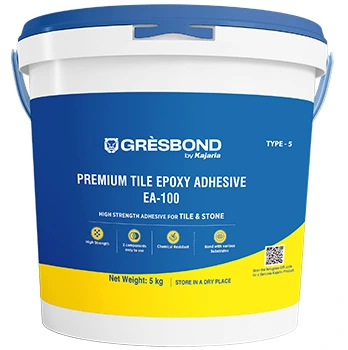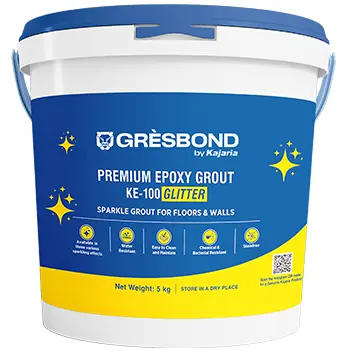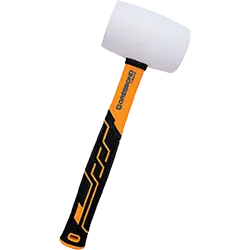What is the difference Between Wall and floor Tile Adhesives?

15
dec 2023
What is the difference Between Wall and floor Tile Adhesives?
Regarding tiling, the adhesive you choose can significantly affect the outcome. In tiles, wall and floor adhesives play distinct roles, each tailored for specific purposes. Let's dive into the basics and unravel the differences between these essential components.
Wall Tile Adhesive: Sticking with Style Understanding Wall Tile Adhesive:Wall tile adhesive is formulated to secure tiles to vertical surfaces, such as walls. This adhesive is your go-to solution, whether revamping your kitchen backsplash or giving your bathroom walls a facelift.
Key Features of Wall Tile Adhesive:
- Ceramic Compatibility:Wall tile adhesive is designed to work seamlessly with ceramic tiles, ensuring a solid bond that withstands the test of time.
- Exterior Applications:It's suitable for exterior applications, making it versatile for indoor and outdoor wall-tiling projects.
- Chemical Composition:Wall tile adhesive often contains specific chemicals that enhance its bonding capabilities on vertical surfaces. This composition ensures that the tiles stay firmly in place.
- Bathroom Brilliance:Given its resistance to moisture and humidity, wall tile adhesive is an excellent choice for bathroom walls. It prevents tiles from loosening due to constant exposure to water.
- Fixing Material:When fixing tiles on walls, this adhesive serves as the material that not only bonds the tiles securely but also ensures they remain in place even in high-moisture environments.
Floor tile adhesive is engineered to handle the demands of horizontal surfaces, such as floors. Whether upgrading your living room or renovating your kitchen floor, this adhesive provides the stability and durability needed.
Key Features of Floor Tile Adhesive:- Cement Compatibility:Floor tile adhesive is well-suited for cement and concrete surfaces, forming a robust bond that endures the weight and foot traffic experienced by floors.
- Concrete Companion:It works exceptionally well with concrete floors, ensuring tiles' secure and lasting attachment to the surface.
- Chemical Composition:Similar to wall tile adhesive, the chemical composition of floor tile adhesive is tailored to provide optimum bonding on horizontal planes. This composition contributes to the longevity of the tile installation.
- Bathroom Brilliance:While floor tile adhesive is not designed explicitly for bathroom walls due to its horizontal focus, it's an ideal choice for bathroom floors. Its resistance to moisture makes it a reliable solution for bathroom flooring.
- Fixing Material:When fixing tiles on floors, this adhesive serves as the foundational material, creating a stable surface that can withstand the pressures of daily use.
- Orientation:The primary difference lies in their application orientation. Wall tile adhesive is designed for vertical surfaces, while floor tile adhesive is tailored for horizontal surfaces.
- Compatibility:Wall tile adhesive is compatible with ceramic tiles and is suitable for exterior applications. On the other hand, floor tile adhesive is formulated for cement and concrete surfaces, providing durability and stability.
- Chemical Composition:Both adhesives share a similar chemical composition, focusing on creating strong bonds. However, the specific formulation is adjusted to meet the demands of either vertical or horizontal applications.
- Moisture Resistance:While both adhesives exhibit resistance to moisture, wall tile adhesive's moisture resistance is more geared towards preventing water from seeping into the adhesive from above, making it ideal for bathroom walls. With its horizontal focus, floor tile adhesive prevents water from compromising the adhesive from below, making it suitable for bathroom floors.
- Application Area:Choose wall tile adhesive for projects involving vertical surfaces like kitchen backsplashes and bathroom walls. Opt for floor tile adhesive when tackling horizontal surfaces like living room or kitchen floors.
The key to a successful tile installation is understanding the nuances of wall and floor tile adhesives. Choosing the suitable adhesive for the correct application ensures a durable, stable, and visually appealing result that stands the test of time. So, whether you're embarking on a wall or floor tiling project, let your knowledge of these adhesives guide you towards a successful and long-lasting outcome.


























